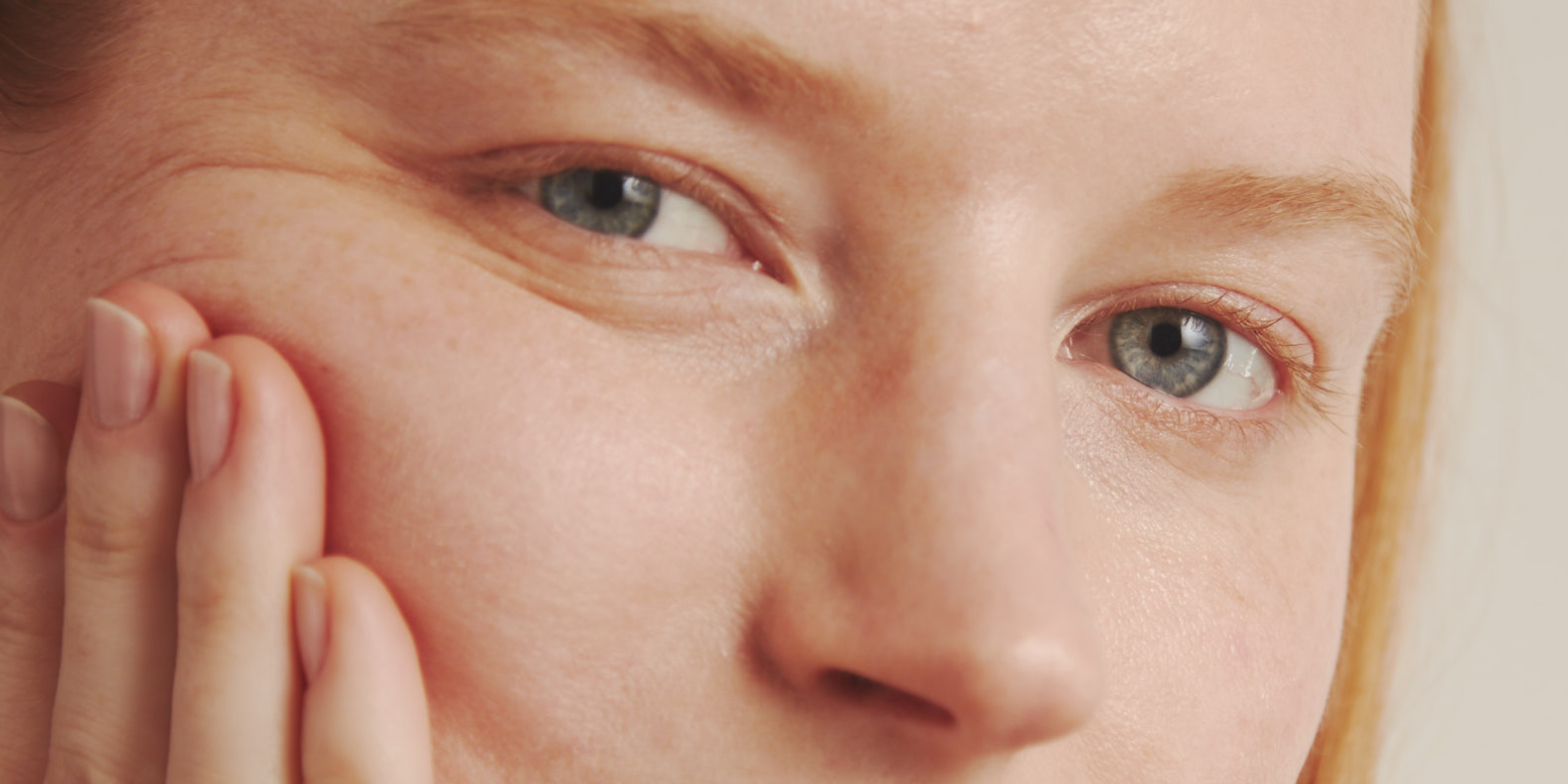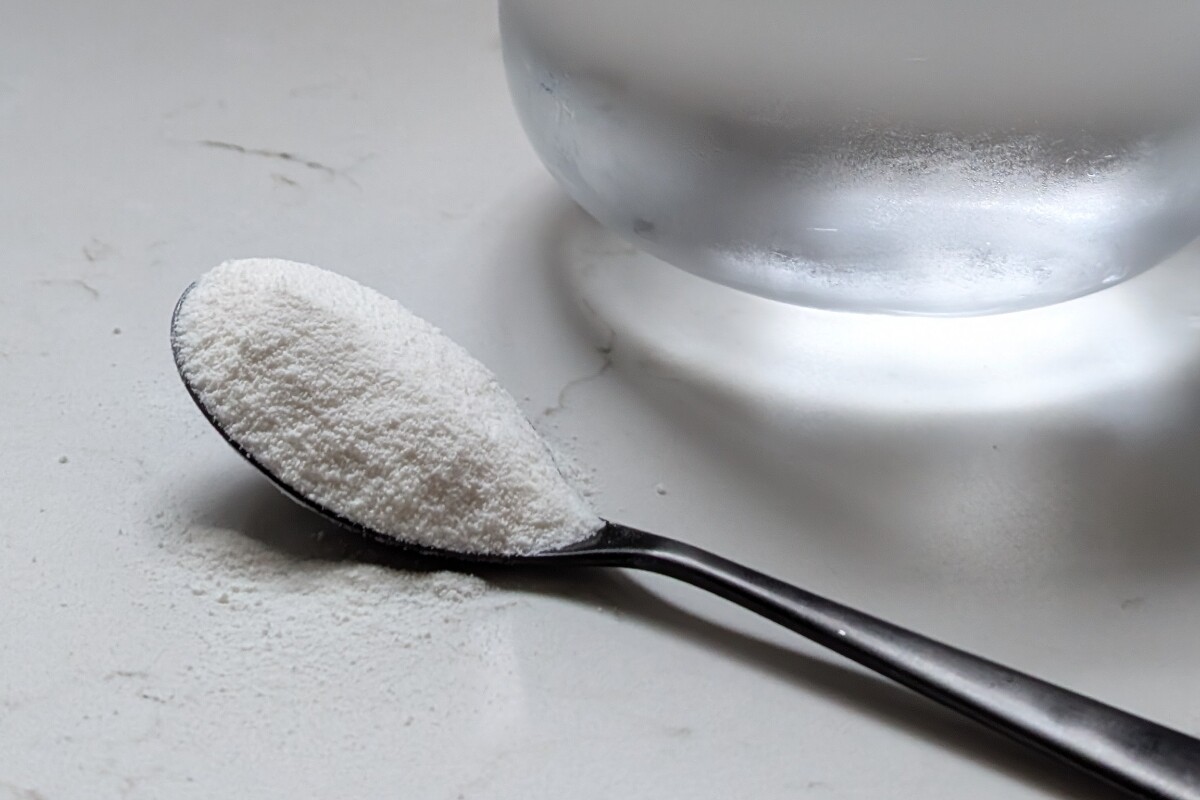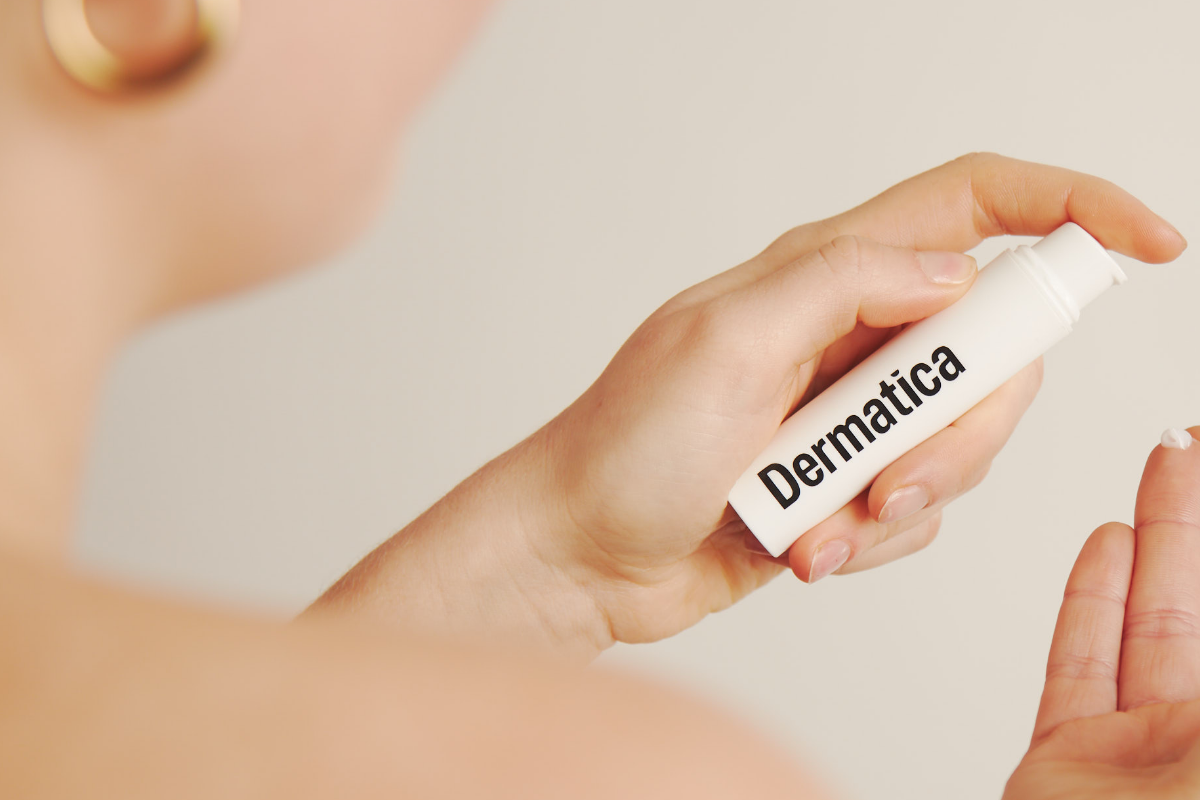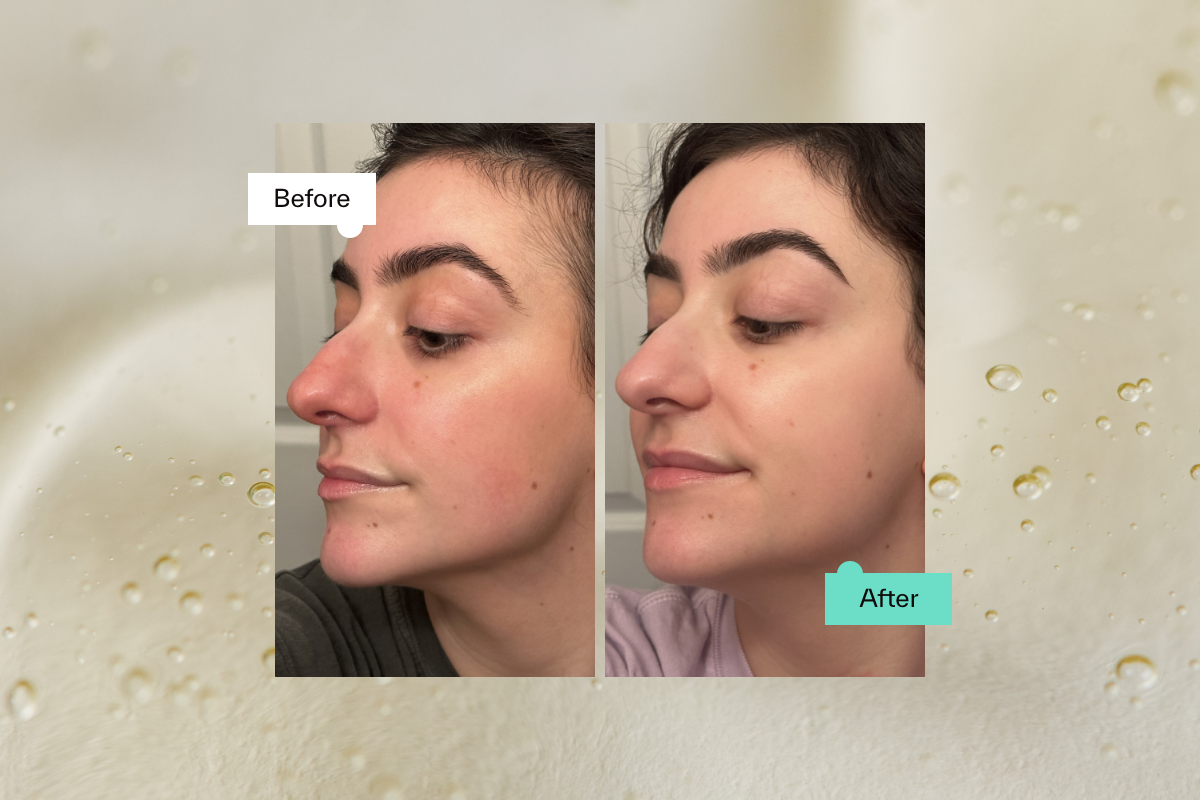Many new Dermatica customers already have skincare routines with glow-boosting exfoliating acids. But is it a good idea to combine them with other active ingredients like retinol, retinoids or your personalised formula?
Combining AHAs, BHAs and PHAs with retinol may help improve the appearance of skin conditions like acne, sun damage, melasma and hyperpigmentation. But while these active skincare ingredients could deliver better results, using them without knowing how can cause skin irritation or damage your skin barrier. (1)
Let’s break down how to combine AHAs, BHAs and PHAs with retinol and retinoids, their benefits and whether exfoliating acids can be used alongside your Dermatica formula.
What Are Exfoliating Acids?
Exfoliating acids include AHAs, BHAs and PHAs, commonly found in over-the-counter skincare products. They work by breaking down dead cells on the top layer of your skin, resulting in a radiant complexion. They can improve the appearance of many skin concerns, including acne, dry or dull skin, and hyperpigmentation. BHAs have the additional benefit of unclogging pores for people with acne-prone or blemish-prone skin. (2)
What Are Alpha-hydroxy Acids (AHAs)?
AHAs are natural acids, typically derived from milk (e.g. lactic acid) or fruits (e.g. glycolic acid). They are water soluble and have anti-ageing benefits. (1)
Common AHAs Found In Skincare Products
Glycolic acid, lactic acid and malic acid.
How AHAs Work On The Skin
AHAs loosen and remove the top layer of dead skin cells, increasing cell turnover, fading dark spots and making way for a new generation of fresh cells for brighter, younger-looking skin.
By removing the top layer of dead skin cells, AHAs also improve skin hydration too. They allow hydrating products like serums and moisturisers to penetrate more effectively. (3)
How To Choose The Right AHA For Your Skin Type
If you’ve never used AHAs before, or you have sensitive skin, our dermatologists recommend starting with lactic or mandelic acid as these are the gentlest forms. Choose the lowest strength that you can find (this will appear as a percentage). To further prevent side effects, you can choose a product that’s designed to rinse off immediately like a cleanser, so it isn’t left on the skin.
Can All Skin Types Combine AHAs With Retinol And Retinoids?
Generally speaking, using a retinoid with an AHA is possible for most skin types, but it can cause irritation when it’s not done right. Avoid using AHAs daily until you know your skin tolerates it well.
Allow your skin to adjust to your retinoid formula before adding or reintroducing an AHA to your skincare routine. If you have very dry or sensitive skin, it’s best to avoid combining the two. Retinol and retinoids are active ingredients that also exfoliate the skin and speed up cell turnover. So combining them with another exfoliant can risk irritation or damage your skin barrier. (4)
What Are Beta-Hydroxy-Acids (BHAs)?
BHAs are oil-soluble acids. The most common form found in skincare products is salicylic acid.
How BHAs Work On The Skin
BHAs exfoliate both the skin’s surface as well as blocked pores. They’re a popular over-the-counter option for those with acne-prone skin, or who want to target blemishes, blackheads and milia. (5)
Can All Skin Types Mix BHAs With Dermatica?
BHAs are milder than other types of acids, so they’re suitable for all skin types. If you’re just starting a retinoid-based treatment, we don’t advise combining the two, as it could cause irritation or damage your skin barrier. If your skin has adjusted to your Dermatica formula or retinol treatment already, you can try to add salicylic acid back to your skincare routine gradually – 1-2 times a week at first. If you notice changes to your skin barrier, stop using the product until your skin returns to normal.
What Are Poly-Hydroxy Acids?
Poly-hydroxy acids (PHAs) are natural acids that are derived from fruits. They fall under the AHA family, but their molecules are much larger.
Common PHAs used in skincare
Gluconolactone and lactobionic acid
How PHAs Work To Exfoliate Your Skin
PHAs are chemical exfoliants that work on the skin’s surface to shift dead skin cells. This in turn boosts skin cell turnover, revealing newer, fresher skin cells beneath. PHAs help tackle uneven skin tone and dark spots. They also help improve skin hydration by allowing serums and moisturisers to penetrate deeper into the skin.
Because their molecular structure is larger than AHAs, they can’t penetrate too far beyond the skin’s surface (epidermis), so they may cause less irritation than other chemical exfoliants. (6)
Can All Skin Types Mix PHAs and Retinol?
Early evidence suggests that PHAs could be a good alternative for those with sensitive skin, rosacea or eczema. Especially if your skin is easily irritated or you can’t tolerate AHAs and BHAs. However, we recommend being careful and watching how your skin tolerates it before getting too invested, as studies of this active ingredient are still in their early stages and need further research.
Potential Adverse Effects From Combining Exfoliants With Retinol or Retinoids
The most common side effects when combining AHAs, BHAs or PHAs with retinol – or retinoids like your personalised formula – include redness (in lighter and olive skin tones), inflammation, stinging, burning, swelling and peeling.
Some people may experience similar side effects to retinisation, as the active ingredients also have exfoliating properties. This makes it tricky to work out whether it’s the acid or your new treatment plan that’s causing the irritation. (1)
If you notice severe irritation, stop using exfoliating products immediately. Stick to gentle, fragrance-free products until your skin barrier has healed. We recommend:
Cleanser: Balancing Glycerin Gel Cleanser for oily, rosacea or blemish-prone skin, or Caring Squalane Cleanser for normal to dry skin.
Moisturiser: Soothing Centella Gel Moisturiser for oily, rosacea or blemish-prone skin, or Nourishing Ceramide+Peptide Moisturiser for balanced to dry skin.
How To Prevent Adverse Reactions
– Only use acids once you know your skin has passed the retinisation process. This generally takes a few weeks after starting treatment, or starting a new dosage. Not everyone experiences retinisation, but it’s important to wait until after the first few weeks have ended, in case you do.
– Start with low contact washes or toners, especially if you’re also using retinol or retinoids. This reduces the amount of time it’s in contact with your skin, which reduces the potential for irritation.
– Go slow. Your skin can take time to adjust to combining AHAs, BHAs and PHAs with retinol or retinoids like your Dermatica formula. We recommend applying it in the morning (as your retinol or Dermatica treatment should be applied in the evening only).
– Don’t apply exfoliating acids every day. Start using it once a week, and gradually build it up to twice or three times a week from there.
– If you notice any irritation, immediately remove the acids from your routine. Allow your skin to normalise before gradually bringing it back in. If there’s still irritation, take a break from your Dermatica treatment for a night or two. Gradually introduce it back once your skin has healed.
Exfoliating Methods To Avoid While Using Retinol Or Retinoids
Mechanical (or physical) exfoliation is the process of physically sloughing or brushing away the top layer of skin cells. When using AHAs, BHAs and PHAs with retinol or retinoids, you should avoid any mechanical exfoliation, like loofahs, grainy scrubs and cleansing brushes.
Physical exfoliation can impact the dull, dead skin cells on the epidermal layer, possibly leading to clogged pores and bacteria build-up, making the situation worse in some cases. They can also increase water loss in the skin (TEWL), causing dryness and disrupting your skin’s biome. What’s more, the act of scrubbing may also inflame or damage your delicate skin barrier. (7)
Can I Use Exfoliating Acids With My Dermatica Personalised Formula?
You can, but keep checking on your skin throughout – as this combination won’t suit everyone. If you find your skin is reacting, remove the other chemical acids first (so that’s any AHAs, BHAs or PHAs).
If irritation continues then take a break from your personalised formula for a few days. This allows your skin to normalise before you gradually re-introduce your formula to your nightly routine.
Still unsure? If you’re a Dermatica customer, feel free to check in with a member of our licensed dermatology team at any time through your dashboard. They can advise you on your unique needs, and give you personalised advice that’s tailored to your formula and your journey.
Find out what formulas are suitable for your skin by visiting our website.
References
1) Tang SC, Yang JH. Dual Effects of Alpha-Hydroxy Acids on the Skin. Molecules : A Journal of Synthetic Chemistry and Natural Product Chemistry [Internet]. 2018 Apr 10;23(4). Available from: https://www.ncbi.nlm.nih.gov/pmc/articles/PMC6017965/
2) Șoimița Emiliana Măgerușan, Hancu G, Rusu A. A Comprehensive Bibliographic Review Concerning the Efficacy of Organic Acids for Chemical Peels Treating Acne Vulgaris. Molecules. 2023 Oct 22;28(20):7219–9.
3) Kornhauser A. Applications of hydroxy acids: classification, mechanisms, and photoactivity. Clinical, Cosmetic and Investigational Dermatology. 2010 Nov;3:135.
4) Katz BE, Lewis J, McHugh L, Pellegrino A, Popescu L. The Tolerability and Efficacy of a Three-product Anti-aging Treatment Regimen in Subjects with Moderate-to-severe Photodamage. The Journal of Clinical and Aesthetic Dermatology [Internet]. 2015 Oct 1;8(10):21–6. Available from: https://www.ncbi.nlm.nih.gov/pmc/articles/PMC4633208/
5) Arif T. Salicylic Acid as a Peeling agent: a Comprehensive Review. Clinical, Cosmetic and Investigational Dermatology [Internet]. 2015 Aug;8:455–61. Available from: https://www.ncbi.nlm.nih.gov/pmc/articles/PMC4554394/
6) Gentili G, Perugini P, Stefano Bugliaro, D’Antonio C. Efficacy and safety of a new peeling formulated with a pool of PHAs for the treatment of all skin types, even sensitive. Journal of Cosmetic Dermatology. 2022 Aug 9;22(2):517–28.
7) Rodan K, Fields K, Majewski G, Falla T. Skincare Bootcamp: The Evolving Role of Skincare. Plastic and Reconstructive Surgery – Global Open. 2016 Dec;4(12):e1152.
Cat Hyatt
Dr Cat Hyatt is a GP, working as Clinical Content Lead for Dermatica. She has a special interest in medical content and making healthcare information accessible and understandable for all.





